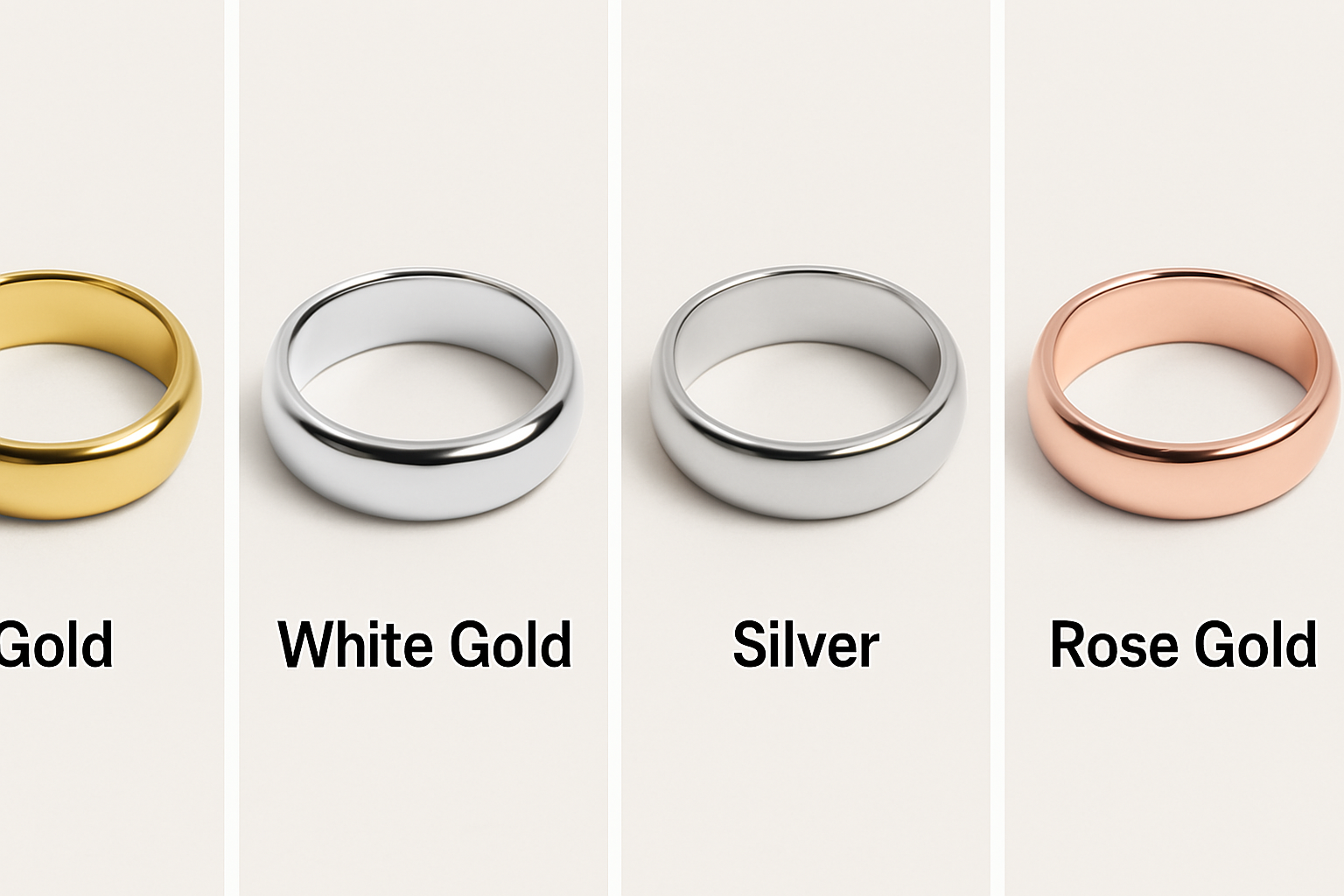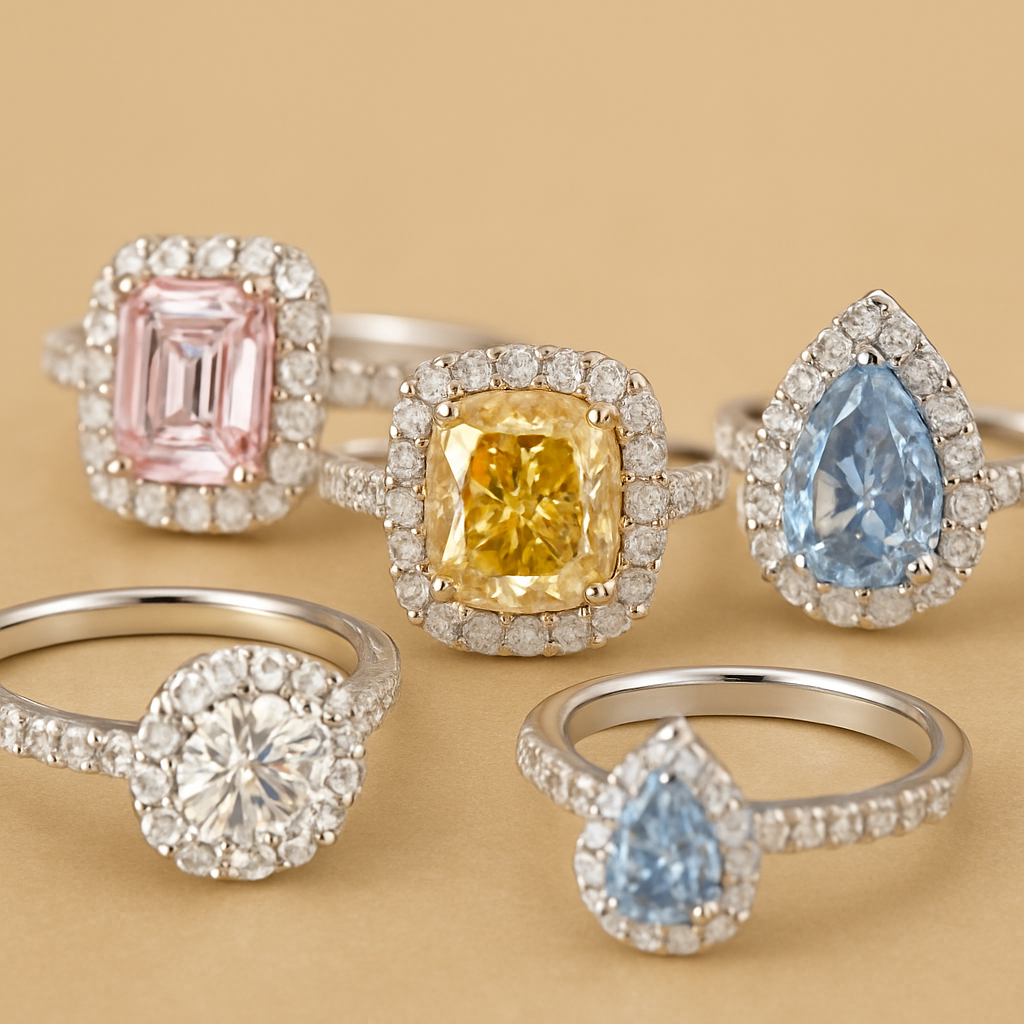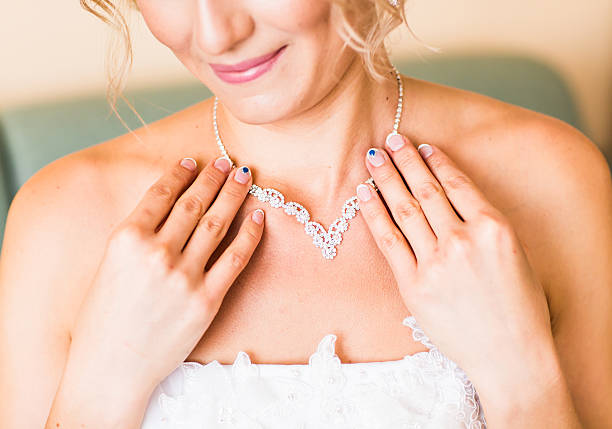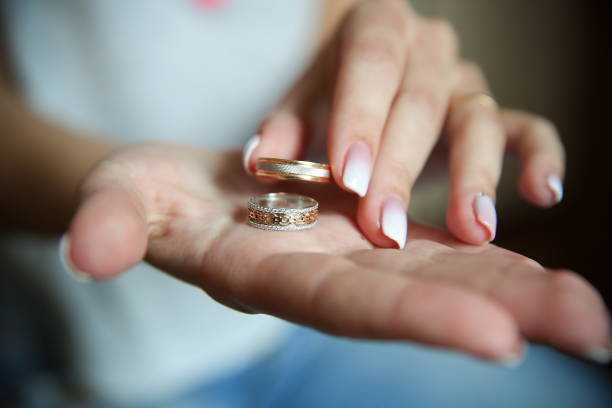Metal is the primary element of your jewelry, not just a base. Selecting the appropriate metal can make all the difference when purchasing a classic ring, sophisticated bracelet, or personalized gift. It affects not only the look of the jewelry but also its durability, value, and comfort. In this blog i will help you choose the appropriate metal for your next treasure by walk you through the Four most common options : gold, white gold, rose gold and silver.
💡 Why Choosing the Right Metal Matters
All metals have unique characteristics. There is a metal for every taste and lifestyle, ranging from the traditional yellow gold to the contemporary, blush-toned rose gold to the cool shimmer of silver and white gold. Making a decision that fits your preferences, style, and budget requires an understanding of how they differ from one another.
🟡 Gold: The Timeless Classic
For centuries, gold has been prized for its beauty and worth, becoming known as an icon of luxury and prosperity. Gold is a metal that enchants and endures over time because of its naturally warm, yellow hue. In order to increase its strength and durability and guarantee that it retains its appeal in a variety of applications, especially jewelry, it is frequently alloyed with other metals.
💛 Types of Gold:

-
24K: Pure gold (soft, rarely used in jewelry)
-
22K: 91.6% pure, commonly used in Indian and Middle Eastern jewelry
-
18K: 75% gold, highly durable, ideal for fine jewelry
-
14K: 58.5% gold, affordable and very durable for daily wear
✅ Pros:
-
Does not tarnish
-
Hypoallergenic (especially 18K+)
-
Timeless appeal, always in style
-
Holds value over time
⚠️ Cons:
-
Expensive, especially for 24K and 22K gold
-
Higher karat gold can be soft and scratch easily
💎 Best For:
-
Engagement rings and wedding bands
-
Investment jewelry
-
Heirloom pieces
⚪ White Gold: Modern Elegance
White gold is an alloy created by mixing yellow gold with metals such as nickel, palladium, and sometimes platinum. The end product is a gorgeous, gleaming metal that seems like silver. White gold has a thin layer of rhodium applied to it to increase its durability and give it a unique luster. This adds protection against tarnishing and scratches.
✅ Pros:

-
Durable and resistant to scratching
-
Looks like platinum but at a more affordable price
-
Elegant, modern appearance
-
Popular for engagement rings and diamond settings
⚠️ Cons:
-
Requires rhodium plating every 1–2 years to maintain its shine
-
May cause allergic reactions if nickel is used in the alloy
💎 Best For:
-
Engagement rings, wedding bands, and men’s jewelry
-
Modern, minimalist designs
🟩 Silver: Affordable & Versatile
Fashion jewelry is often made of silver, especially sterling silver, which is 92.5% pure silver. Silver, which is well-known for its cool, white sheen, has a classic, elegant appearance that goes well with many different styles. It is a well-liked choice for daily wear because of its durability and affordability.
✅ Pros:

-
Affordable and widely available
-
Light and comfortable to wear
-
Bright, shiny appearance
-
Excellent for trendy designs
⚠️ Cons:
-
Tarnishes over time with exposure to air and moisture
-
Softer than gold and can be scratched easily
-
Needs regular cleaning and maintenance
💎 Best For:
-
Fashion jewelry
-
Trendy bracelets, rings, and earrings
-
Gifts and affordable pieces for everyday wear
🌸 Rose Gold: Romantic & Modern
The warm, romantic hue of rose gold, which radiates elegance and charm, has made it extremely popular. In contrast to conventional gold and silver, this distinctive color is produced by alloying gold with copper, giving it a lovely pinkish tone. It is a popular option in modern jewelry design because of its unique look.
✅ Pros:

-
Warm, feminine, and romantic appeal
-
Very durable due to the copper content
-
No need for rhodium plating like white gold
-
Distinctive and eye-catching
⚠️ Cons:
-
Copper can cause allergic reactions for some people
-
The rose tint may fade over time if exposed to harsh elements
💎 Best For:
-
Engagement rings and wedding bands
-
Trendy and contemporary designs
-
Gifts for those who love a hint of warmth and romance
💭 How to Choose the Right Metal for Your Jewelry
Selecting the appropriate metal for your jewelry is a significant choice that is influenced by a number of factors, such as skin sensitivity, durability, personal style, and financial constraints. The following advice will help you make your choice:
1. Think About Your Personal Style Preferences :-
Selecting the appropriate metal is dependent on your personal taste. Gold may be your first choice if you value classic elegance. Silver or white gold might be a better choice for a more elegant, more contemporary style. Rose gold has a distinctive and fashionable appeal if you're attracted to a softer, more romantic tone.
2. Consider Durability :-
Durability is important, particularly for daily wearable jewelry. White gold is incredibly strong and perfect for frequently worn items like engagement rings. Rose gold and silver are also strong, but they might need more attention over time to prevent scratches or tarnishing.
3. Financial Aspects :-
Your choice will be heavily influenced by your budget. The least expensive choice is silver, which is followed by 14K gold. White gold or 18K gold might be excellent choices if you're searching for something more luxurious but still affordable.
4. Sensitivity of the Skin :-
For those with sensitive skin, certain metals, such as nickel in white gold, can irritate or trigger allergic reactions. Because sterling silver is hypoallergenic, most people can wear them. Metals like these should be taken into consideration if you have sensitive skin in order to prevent discomfort.
5. Examine the Look of the Metal :-
The aesthetics of various metals vary. Rose gold adds a romantic, pinkish hue, silver has a cool and glossy finish; and gold offers a warm, classic tone. Consider your preferred jewelry's color and sheen as well as how it will go with your skin tone and outfit.
🧼 Caring for Your Jewelry: Metal-Specific Tips
Maintaining the longevity and beauty of your jewelry requires proper care. To help you maintain your priceless pieces, here are some care guidelines tailored to particular metals:

Gold
-
To get rid of oil and grime, use a gentle cloth and warm water.
-
Gold can be soft, especially at higher karats, so store it separately to prevent scratches.
White Gold
-
To preserve its gleaming, silver-like appearance and shield it from tarnish, re-plate with rhodium every one to two years.
-
Store in a jewelry box to protect it from scratches and prevent damage from other metals.
Silver
-
To get rid of tarnish and bring back its luster, use a polishing cloth.
-
Store silver jewelry in an airtight pouch or anti-tarnish cloth to avoid tarnishing when not in use.
-
To avoid accumulation and maintain its fresh appearance, clean frequently.
Rose Gold
-
Clean with mild soap and warm water, then pat dry with a soft cloth.
-
Store separately from other jewelry to prevent scratches due to its copper alloy.
-
Watch out for possible tarnishing, particularly in pieces that contain more copper.
🎯 Final Thoughts: The Best Metal for You
When it comes to selecting the ideal metal for your jewelry, there is no one-size-fits all solution. The best option will rely on your budget, personal style, and intended wear.
Rose gold adds a hint of romance, white gold shines with a contemporary twist, gold offers classic elegance, and silver offers affordability and adaptability.
💍 Ready to Choose Your Perfect Metal?
View our collection at San Liora website in witch you can find out beautiful jewelry in rose gold, silver, white gold, and gold. You're guaranteed to find the ideal fit for your style among pieces that are appropriate for every situation. A 12-month warranty and an appraisal certificate are included with every piece to guarantee its value and beauty over time.







